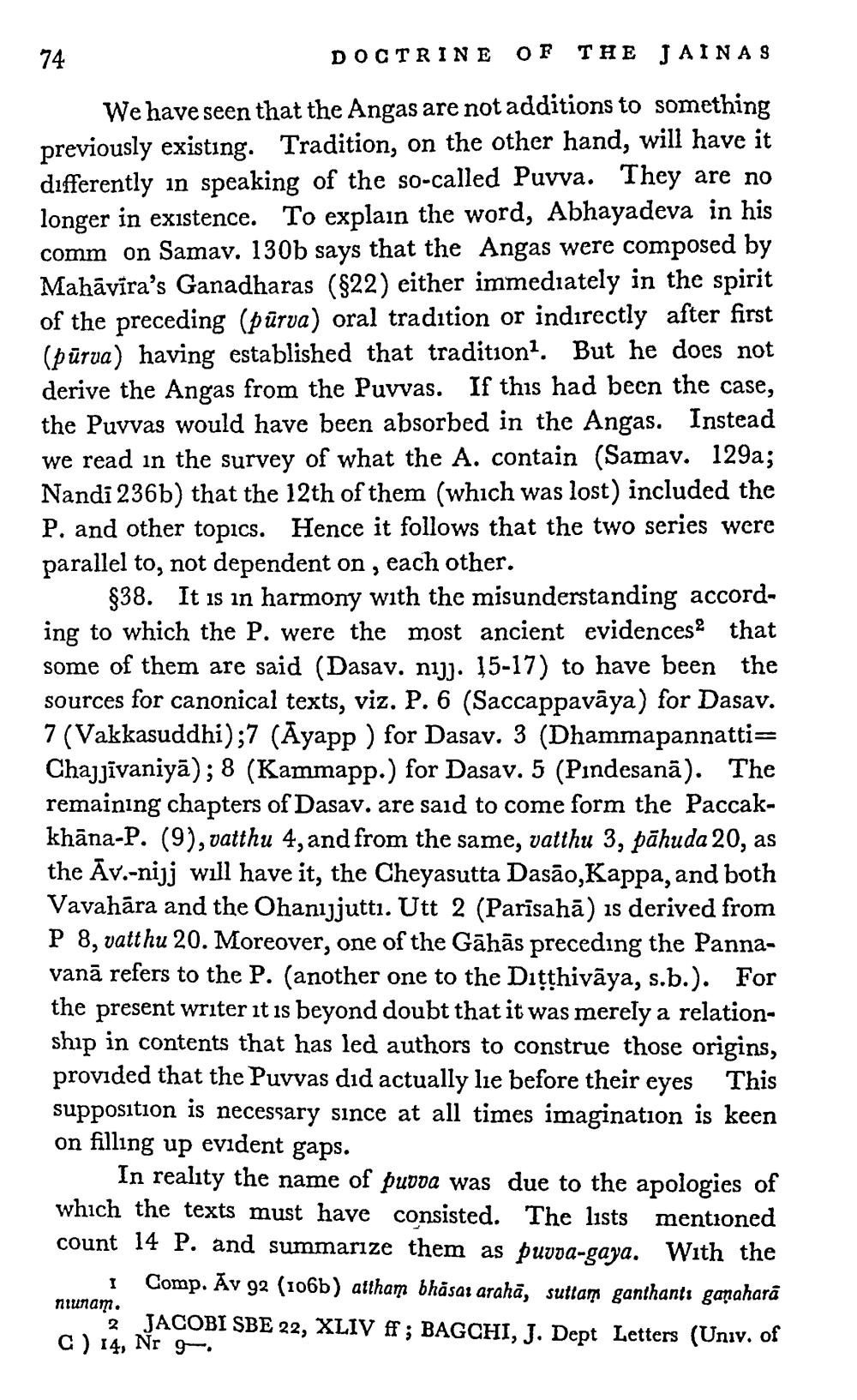________________
DOCTRINE OF THE JAINAS
We have seen that the Angas are not additions to something previously existing. Tradition, on the other hand, will have it differently in speaking of the so-called Puvva. They are no longer in existence. To explain the word, Abhayadeva in his comm on Samav. 130b says that the Angas were composed by Mahāvīra's Ganadharas (822) either immediately in the spirit of the preceding (pūrva) oral tradition or indirectly after first (pūrva) having established that tradition?. But he does not derive the Angas from the Puvvas. If this had been the case, the Puvvas would have been absorbed in the Angas. Instead we read in the survey of what the A. contain (Samav. 129a; Nandi 236b) that the 12th of them (which was lost) included the P. and other topics. Hence it follows that the two series were parallel to, not dependent on, each other.
$38. It is in harmony with the misunderstanding according to which the P. were the most ancient evidences that some of them are said (Dasav. nij). 15-17) to have been the sources for canonical texts, viz. P. 6 (Saccappavāya) for Dasav. 7 (Vakkasuddhi);7 (Āyapp ) for Dasav. 3 (Dhammapannatti= Chajjīvaniyā); 8 (Kammapp.) for Dasav. 5 (Pindesanā). The remaining chapters of Dasav. are said to come form the Paccakkhāna-P. (9), vatthu 4, and from the same, vatthu 3, pāhuda 20, as the Āv.-nijj will have it, the Cheyasutta Dasão,Kappa, and both Vavahāra and the Ohanijjuttı. Utt 2 (Parīsahā) is derived from P 8, vatt hu 20. Moreover, one of the Gāhās preceding the Pannavanā refers to the P. (another one to the Diţthivāya, s.b.). For the present writer it is beyond doubt that it was merely a relationship in contents that has led authors to construe those origins, provided that the Puvvas did actually lie before their eyes This supposition is necessary since at all times imagination is keen on filling up evident gaps.
In reality the name of pudda was due to the apologies of which the texts must have consisted. The lists mentioned count 14 P. and summarize them as pudda-gaya. With the
1 Comp. Āv 92 (106b) attham bhāsas arahā, suttam ganthantı ganaharā niunam.
2 JACOBI SBE 22, XLIV #; BAGCHI, J. Dept Letters (Univ. of C) 14, Nr g




